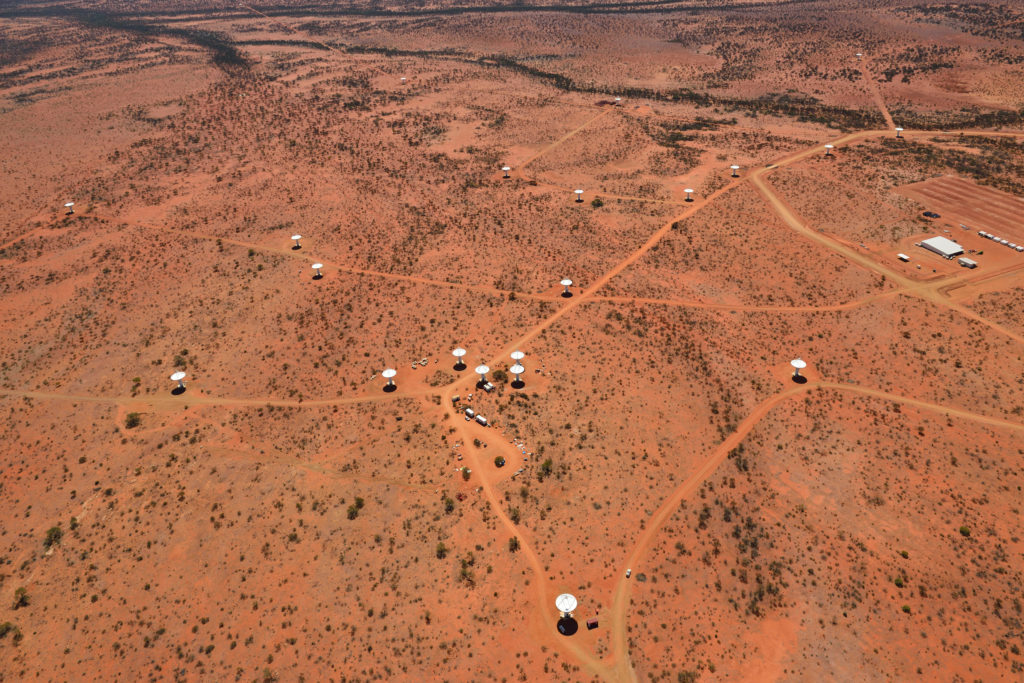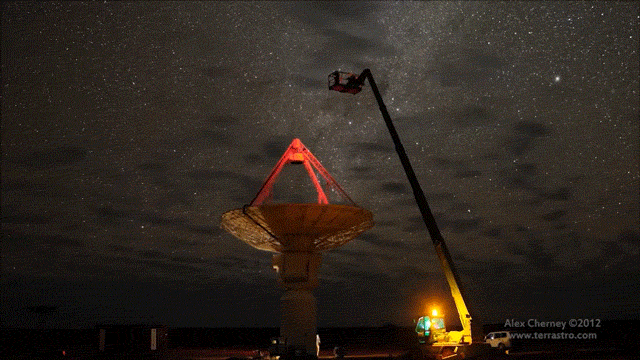You might have heard about the Square Kilometre Array, and how it will transform the way we understand the Universe, but have you ever stopped to think what it takes to build the world’s largest radio telescope?

A birds eye view of the MRO, ASKAP antennas and the Control Building.
You might have heard about the Square Kilometre Array, and how it will transform the way we understand the Universe, but have you ever stopped to think what it takes to build the world’s largest radio telescope?
We have. We’re working with scientists, engineers, industry and governments around the world to design the mega-science facility. But a telescope is more than just antennas, and careful planning is needed to work out what’s physically needed on the sites to support the project.
“Building a telescope at such a remote location is a huge logistical challenge,” explains Ant Schinckel, who heads up the SKA Infrastructure Australia team (and is also the Project Director of our newest telescope, ASKAP).
“There’s power, communications, water supply and sanitation to consider, as well as somewhere to put the supercomputer and complex digital electronics. Ultimately, everything we design needs to preserve the radio-quiet environment of the site to ensure the SKA will answer some of our biggest questions.”
The SKA will be co-hosted by Australia and southern Africa, and our site – the Murchison Radio-astronomy Observatory – is located in the middle of the outback in Western Australia. This location was chosen specifically because it is far from the electronic hustle-bustle of the everyday world, and therefore extremely “radio quiet”.
And we want to keep it that way, especially as the MRO is already home to telescopes, like ASKAP, which is primed to detect extremely weak radio signals from sky and already uncovering exciting discoveries.
Let me count the ways
Here are some of the big numbers behind ASKAP and the SKA, and why such special consideration goes in to the design of these telescopes:
- 36: The number of ASKAP antennas working together as a single telescope
- 7776: the total number of optic fibres connecting the ASKAP antennas to the central processing building
- 1.9 Tb/s: the data being collected by the ASKAP antennas, which is processed before being sent to a supercomputer in Perth.
- 100 billion billion (that’s a 1 followed by 20 zeroes): the ‘reduction factor’ of the building’s special shielding, known as a Faraday Cage. Two layers of welded steel encase the building, preventing electronic emissions from the inside leaking outside – this protects the highly sensitive antennas from radio frequency interference.
- 160 terabytes: the amount of raw data the SKA is expected to generate per second – roughly equivalent to five times the global internet traffic in 2015. Now that’s big data.

You spin me right round, ASKAP.
Focused on the horizon
The SKA project has received a boost today with the European Union announcing $8 million in funding, through the Horizon 2020 Research and Innovation Programme, which will support SKA infrastructure design activities.
EU Commissioner for Research, Science and Innovation Carlos Moedas said ambitious projects like the SKA captured the human imagination and could “lead to life-changing discoveries and innovations as well as new knowledge for the whole world.”
The SKA project is currently in pre-construction phase. Phase one construction on the SKA is set to begin in 2018, and we can look forward to early science from 2020.
To find out more about the SKA project head to www.ska.gov.au


26th February 2016 at 6:26 pm
Cool